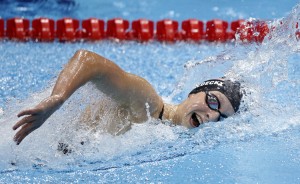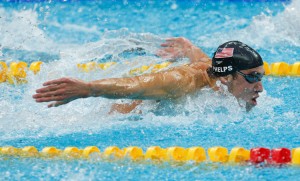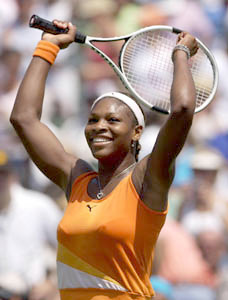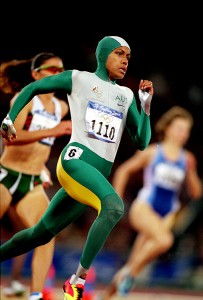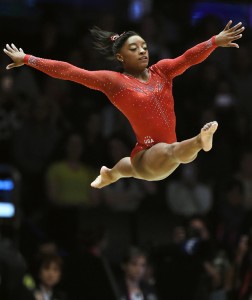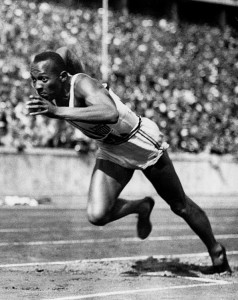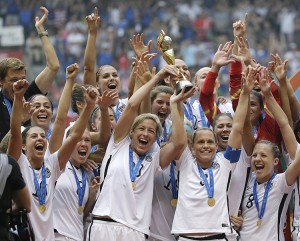Spotlight: Gymnast Simone Biles
Thursday, September 7th, 2023
American gymnast Simone Biles receives the Presidential medal of Freedom from President Joe Biden during a ceremony where President Joe Biden will award the Presidential Medal of Freedom to seventeen recipients in the East Room of The White House on July 7, 2022 in Washington, DC.
Credit: © Oliver Contreras, SIPA USA/Alamy Images
With seven Olympic gold medals, one silver, two bronze, and a President Medal of Freedom, Simone Biles has quite a collection! Simone Biles, an American gymnastics star, is the most decorated gymnast in the history of the sport. In 2019, she surpassed the record previously held by Vitaly Scherbo of Belarus, winning 25 world championship medals. Biles has been celebrated internationally for her grace and athletic skill in executing the most difficult moves in women’s gymnastics. This August Biles won her eighth U.S. Championship after a hiatus from competing since the 2020 Summer Olympics. (The games were postponed to 2021 due to the COVID-19 pandemic.) Her win this year marks ten years since she first won the National Championship.
On July 7, 2022, Biles received the Presidential Medal of Freedom from President Joe Biden, becoming the youngest living person in United States history to earn the honor. The Presidential Medal of Freedom is the highest civilian honor awarded by the president of the United States for outstanding service. The medal recognizes individuals who have made “an especially meritorious contribution to the security or national interests of the United States, or to world peace, or to cultural or other significant public or private endeavors.”
The honor was established on July 6, 1945, as the U.S. Medal of Freedom by President Harry S. Truman to recognize notable civilian service that aided the United States during a time of war. On Feb. 22, 1963, after extensive study by U.S. Supreme Court Justice Arthur J. Goldberg and Assistant Secretary of Labor Daniel Patrick Moynihan, President John F. Kennedy reintroduced the medal as an honor for distinguished civilian service in peacetime. It was renamed the Presidential Medal of Freedom. Recipients have included educators, diplomats, former presidents and first ladies, authors, scientists, medical researchers, military leaders, humanitarians, religious leaders, civil rights activists, business executives, journalists, athletes, and performers.
Biles was a star of the 2016 Summer Olympic Games in Rio de Janeiro, Brazil. She won a team gold medal as well as individual gold medals in the all-around, vault, and floor exercise events, plus a bronze medal on the balance beam. By winning five medals, Biles tied the record for the most medals won by an American woman gymnast in a single Olympics. Her four gold medals tied the world record for the most gold medals won in a single Olympics by a female gymnast.
In 2019, Biles became the first woman to win five world championships in the all-around event. She is the first Black American to hold the women’s world all-around champion title. She won the world floor exercise title five times, the balance beam title in three times, and the vault title two times. Biles won the United States national all-around championship seven times. She was also a member of the American team that won gold medals in the 2014 and 2015 World Artistic Gymnastics Championships.
At the 2020 Summer Olympic Games in Tokyo, Biles brought attention to the intense pressure Olympic athletes face. After balking on the vault event in the team final, she withdrew from the rest of the team competition and four individual events—all-around, vault, uneven bars, and floor exercise—citing mental health issues. Biles went on to win a bronze medal on the balance beam. She also won a team silver medal.
Simone Arianne Biles was born on March 14, 1997, in Columbus, Ohio. She grew up in Texas, raised by her grandparents. Biles was introduced to gymnastics at the age of six on a day-care field trip to a gym in Spring, Texas. She began copying the moves of gymnasts practicing in the gym, attracting the attention of a coach. Biles soon enrolled in recreational classes at the gym under instructor Aimee Boorman, who became her coach. Biles, who stands only 4 feet 8 inches (1.42 meters) tall, entered her first competition in 2011. She won her first gold medals in 2013. Within two years, she became one of the most celebrated and dominant gymnasts in history.

